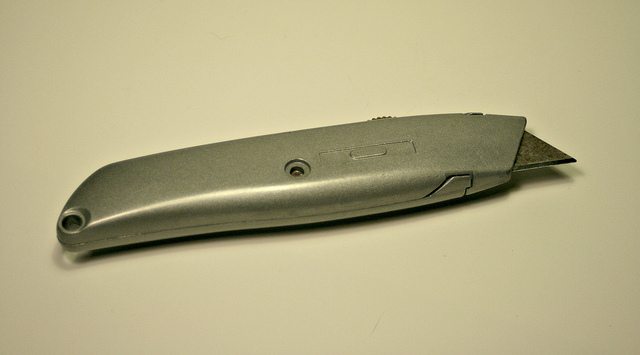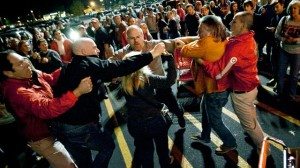
We are often accustomed to think about design in light, happy terms. Design is a way to shape the built environment in beautiful and functional ways. However, design can also be viewed as a creative act of destruction. Design and Violence, an online curatorial project at the Museum of Modern Art (MoMA), is currently exploring this relationship.
In the 1971 book, Design for the Real World,Victor Papanek writes, “There are professions more harmful than industrial design, but only a very few of them.” Papanek was a designer and educator who advocated for social and ecological responsibility in the design of products, tools, and community infrastructures.
Designers, whether architects, fashion gurus, or web developers, create new ways for people to interface with reality. In doing so, they play a major role in reconfiguring society and culture.
There are two main questions posed by Design and Violence. How is violence embedded in design? And how does design impact society’s idea of violence?
Design and Violence is organized by Paolo Antonelli, Senior Curator, Department of Architecture and Design, MoMA; Jamer Hunt, Director, graduate program in Transdisciplinary Design, Parsons The New School for Design; and Kate Carmody, Curatorial Assistant, Department of Architecture and Design, MoMA.
The curators invite experts from a wide range of fields (science, literature, philosophy, journalism, and politics) to comment and theorize on the relationship between design objects and societal violence.
The project defines violence as “a manifestation of the power to alter circumstances, against the will of the other and to their detriment.”
One example of such a manifestation of power is gentrification—in which entire communities are displaced through interdependent socioeconomic and cultural shifts in design.
The curators at Design and Violence have mostly collected objects designed after 2001, to signify the paradigm shift that occurred after the 9/11 attacks. One case study was performed on the box cutter/utility knife, due to its role in the 9/11 plane hijackings.
Other concepts that have been explored by the project include the global shift from symmetrical to asymmetric warfare, as well as the development of cyber-warfare.
There are seven thematic categories through which the curators organize objects—Hack/Infect: disrupting the rules of the system; Constrain: binding, blocking, and distorting; Stun: causing blunt trauma; Penetrate: infiltrate the boundaries, breaching; Manipulate/Control: drawing into the realm of violence with suasion; Intimidate: promising damage and death; and Explode: annihilating visibly and completely.
The most mundane of objects can be the subject of a Design and Violence case study. Take a look at Daan van den Berg’s Merrick Lamp. According to the curators, ‘virus’ is a versatile term that can mean an infecting agent for either biological life or computer files. This fact led van den Berg to hack CAD files, 3-D printing a mutated IKEA lamp named after “Elephant Man” Joseph Carey Merrick.

Andrew Blauvelt, Senior Curator of Design, Research, and Publishing at the Walker Art Center, calls the Merrick Lamp an act of “aesthetic terrorism.” It serves as a subversive commentary on the industrial homogeneity perpetuated by corporations like IKEA.
The Design and Violence website also acts as a forum for design experts to critique each other’s ideas. For example, the Republic of Salivation by Michael Burton and Michiko Nitta is a project that imagines a dystopian future of food shortages, rationing, and synthetic feeding devices. Philosopher and sustainability advocate John Thackara recently critiqued the Republic of Salivation, on the basis that the global food crisis can be solved in more holistic, environmentally conscious ways.
Design and Violence is an ongoing experiment, with no definite end scheduled. The second phase of the project, currently under development, is its Google Earth extension. This phase will enable users to locate the physical location of each object within the collection, allowing for more traditional viewing of the artifacts.





